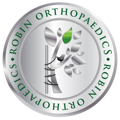Sports Injuries
LOADING
There are a variety of different sporting injuries that Mr Daniel Robin will see with variable frequency throughout the year. For example it would be fairly common for him to be seeing younger male patients between March and September with anterior cruciate ligament ruptures of their knees, as this is a frequently occurring injury sustained during the AFL football and soccer seasons. Similarly, it may be more common for him to see middle-aged patients with elbow pain during the summer months as they start to play more tennis and develop lateral epicondylitis (“tennis elbow”).
Some sporting-type injuries will:
Each of these injury patterns respond differently to treatment, depending on how the injury first occurred. For example, injuries related to repetitive strain or loading, in general, will often be able to be treated non-operatively with rest, ice, anti-inflammatories and a physiotherapy programme aimed at gradually reducing the inflammation, followed by rehabilitating the relevant muscles/tendons, re-educating the patient on their various sporting techniques and gradually returning to activity, in a step-wise fashion. Non-operative treatment for these conditions does not carry the risk of operative complications such as nerve injury and wound infection, however, it requires a lot of patience on the patient’s part as often these injuries can take many weeks and sometimes months to be successfully treated non-operatively. Sometimes it may require extended periods of complete rest from bearing weight such as using crutches. Should non-operative treatment fail after a defined time-period, and the patient is still keen to return to their sport rather than modify their activity, then surgery may be considered.
Sporting injuries due to sudden violence or trauma, on the other hand, is more frequently in need of active, surgical treatment, although again, this is not universally the case, depending on the patient (athlete’s) expectations, extent of injury, and desired return to activity. For example, some patients with ACL or MCL ruptures of their knees may be able to be rehabilitated with physiotherapy and/or bracing for a period of time and may have no symptoms related to their ligament tear down the track, and they may be able to return to certain sports (e.g. swimming, cycling, rowing) without the “need” for an intact ACL. Some minimally displaced fractures can often be perfectly well treated in a plaster cast and may not require open surgery. However, in well-informed, compliant, high demand/high performance athletes, surgical intervention for some of these conditions may result in an earlier/more complete relief of pain, earlier return to (non-competitive) sport/training, and possibly less overall stiffness and muscle atrophy compared to using non-operative methods of treating fractures or ligament/tendon ruptures. Again, this is notwithstanding the risks of surgery.
Some sporting-type injuries will:
- be due to repetitive or excessive use of a particular joint, muscle or tendon group, or due to poor technique, leading to recurrent microscopic injuries in that tissue that aren’t given sufficient time to recover and heal. Examples would include stress fractures of the lower limb – bones of the forefoot, tibia (shin bone) or femoral neck (hip) in runners; iliotibial band friction syndrome in cyclists or runners knees
- occur in a region with poor blood supply or older, more degenerate tissue, (e.g. Achilles tendonitis or rupture, lateral epicondylitis of the elbow)
- happen due to sudden, relatively high energy impact/forces that lead to sudden rupture of soft tissues or fractures of bones, (e.g. hamstrings muscle tears or bony avulsions, knee ligament ruptures – i.e. ACL, PCL, MCL, shoulder dislocations, wrist or scaphoid fractures from landing on an outstretched hand when falling).
Each of these injury patterns respond differently to treatment, depending on how the injury first occurred. For example, injuries related to repetitive strain or loading, in general, will often be able to be treated non-operatively with rest, ice, anti-inflammatories and a physiotherapy programme aimed at gradually reducing the inflammation, followed by rehabilitating the relevant muscles/tendons, re-educating the patient on their various sporting techniques and gradually returning to activity, in a step-wise fashion. Non-operative treatment for these conditions does not carry the risk of operative complications such as nerve injury and wound infection, however, it requires a lot of patience on the patient’s part as often these injuries can take many weeks and sometimes months to be successfully treated non-operatively. Sometimes it may require extended periods of complete rest from bearing weight such as using crutches. Should non-operative treatment fail after a defined time-period, and the patient is still keen to return to their sport rather than modify their activity, then surgery may be considered.
Sporting injuries due to sudden violence or trauma, on the other hand, is more frequently in need of active, surgical treatment, although again, this is not universally the case, depending on the patient (athlete’s) expectations, extent of injury, and desired return to activity. For example, some patients with ACL or MCL ruptures of their knees may be able to be rehabilitated with physiotherapy and/or bracing for a period of time and may have no symptoms related to their ligament tear down the track, and they may be able to return to certain sports (e.g. swimming, cycling, rowing) without the “need” for an intact ACL. Some minimally displaced fractures can often be perfectly well treated in a plaster cast and may not require open surgery. However, in well-informed, compliant, high demand/high performance athletes, surgical intervention for some of these conditions may result in an earlier/more complete relief of pain, earlier return to (non-competitive) sport/training, and possibly less overall stiffness and muscle atrophy compared to using non-operative methods of treating fractures or ligament/tendon ruptures. Again, this is notwithstanding the risks of surgery.
The information above is general. All surgical procedures involve some risk. If you would like advice on your specific condition, please contact the office of Mr Daniel Robin, Melbourne Orthopaedic Surgeon.

